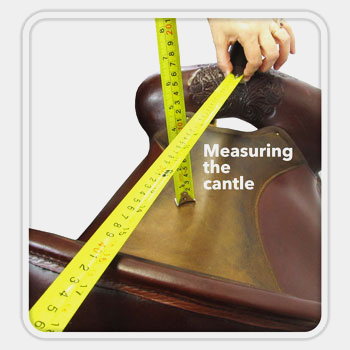Parts of a Saddle - The Cantle
Parts of a saddle | The cantle
Cantle {\ˈkan-təl\} : n. The back of the saddle seat, which provides a backrest and support, keeps the rider in the saddle, as well as anchoring the bars of the saddle tree.
Cantles come in different heights, angles, and shapes. We'll break it down for you:
Cantle height
Higher cantles offer you more protection for your back and encourage good posture. However, most riders like a lower cantle and think it is more comfortable. Western disciples like cutting and reining require a low cantle for a better range of movement, but disciplines like barrel racing and ranch work need the security of a high cantle.

Cantle angle
The angle of the cantle serves the same purposes as the height. Some ranch, trail, and work saddles have a straighter angle to provide a more secure seat. However, most saddles have a medium slope to them. Disciplines that require a lot of upper body movement, such as reining and roping, have very tipped cantles so that it does not interfere with the rider's purposes.

Cantle style
There are two main cantle styles, the pencil roll and the Cheyenne roll. There's not a lot of difference in the feel of either, but some riders prefer a Cheyenne roll because of the stabilizing ledge it provides if you need something to hold on to.

Cantle height measuring
Cantle height is determined by using two measuring devices: a straight edge and a retractable ruler. Use the retractable ruler to measure like you would the seat size and then use the straight edge down on the deepest part of the seat. This will give you your cantle height.
